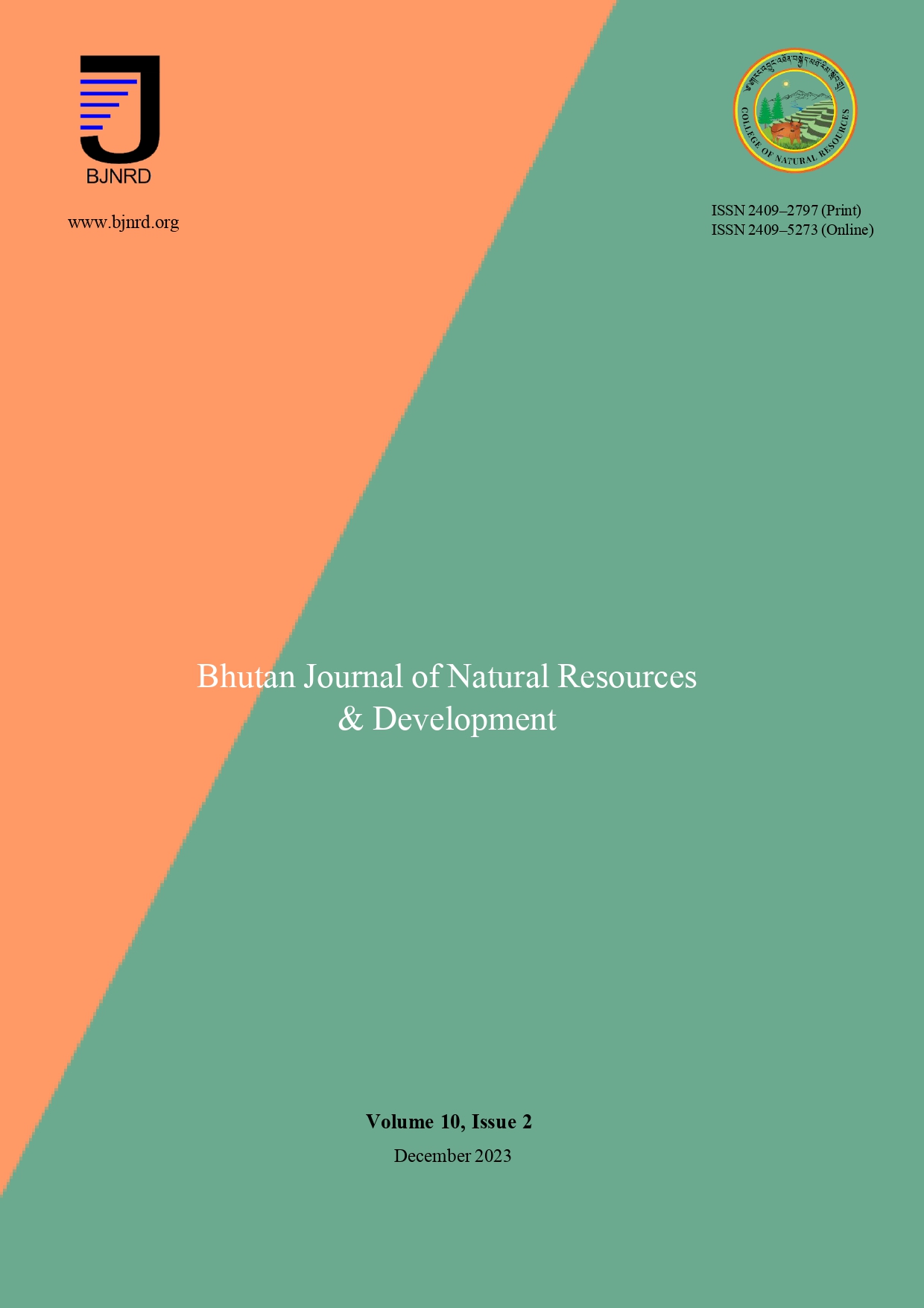Effect of Mixed Grass-Maize Silages on Milk Yield and Composition in Jersey Crossbred Cows
Abstract
Silage feeding is a most popular and economical feed alternative for dairy farmers when feed resources are scarce and production costs increases. A study to evaluate the effect of feeding maize silage and grass mixed silage on milk yield and its composition in Jersey crossbred cows was conducted at the National Cattle Breeding Center, Bumthang district. Nine cows were randomly divided into three treatment groups: 18 kg/day of grass-mixed silage per cow per day (treatment 1, T1), 18 kg of maize silage per cow day (treatment 2, T2), and 18 kg of mixed grass (9 kg) and maize silage (9 kg) per cow per day (treatment 3, T3). Daily milk yield was recorded and milk composition was analyzed every after three days. The difference in milk yield among the treatments was significant (p<.05). The highest mean milk yield was from cows assigned to treatment 3 (4.39 ± 0.26 l per day) and the lowest was from cows assigned to treatment 2 (3.21 ± 0.31 l per day). Likewise, there was significance difference in milk composition among the treatments (p<.05). The cows assigned in treatment 3 had higher milk fat content (5.99 ± 0.32%) than those cows assigned in other treatments. It may be concluded that the mixed grass-maize silages is recommended for the dairy farmers because it increases milk yield and composition in cows.




